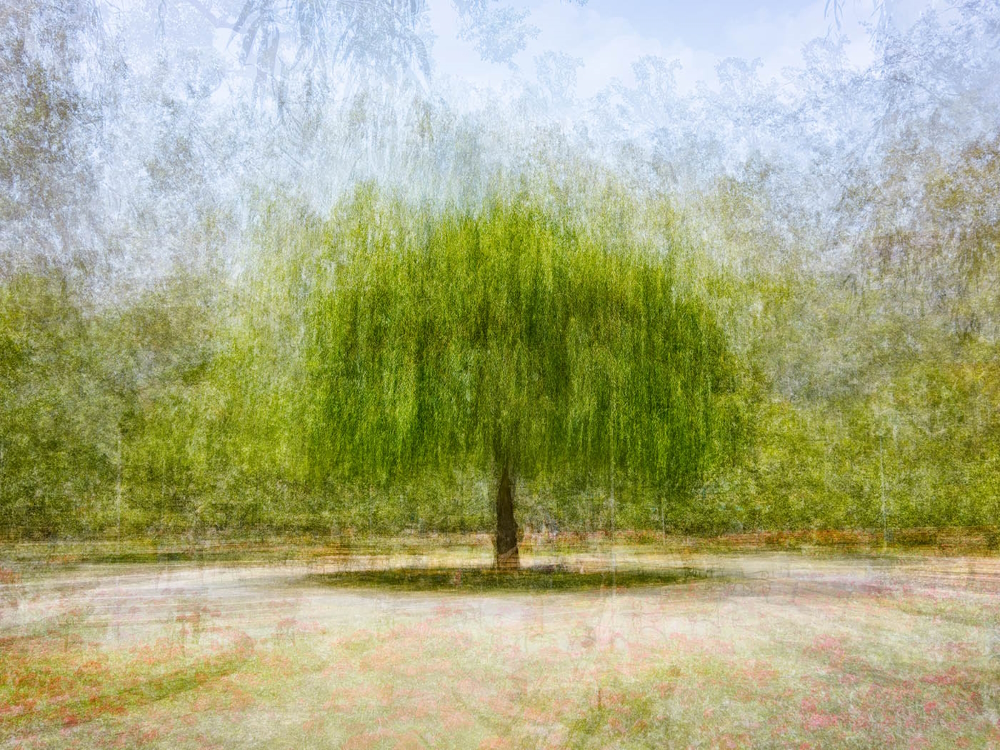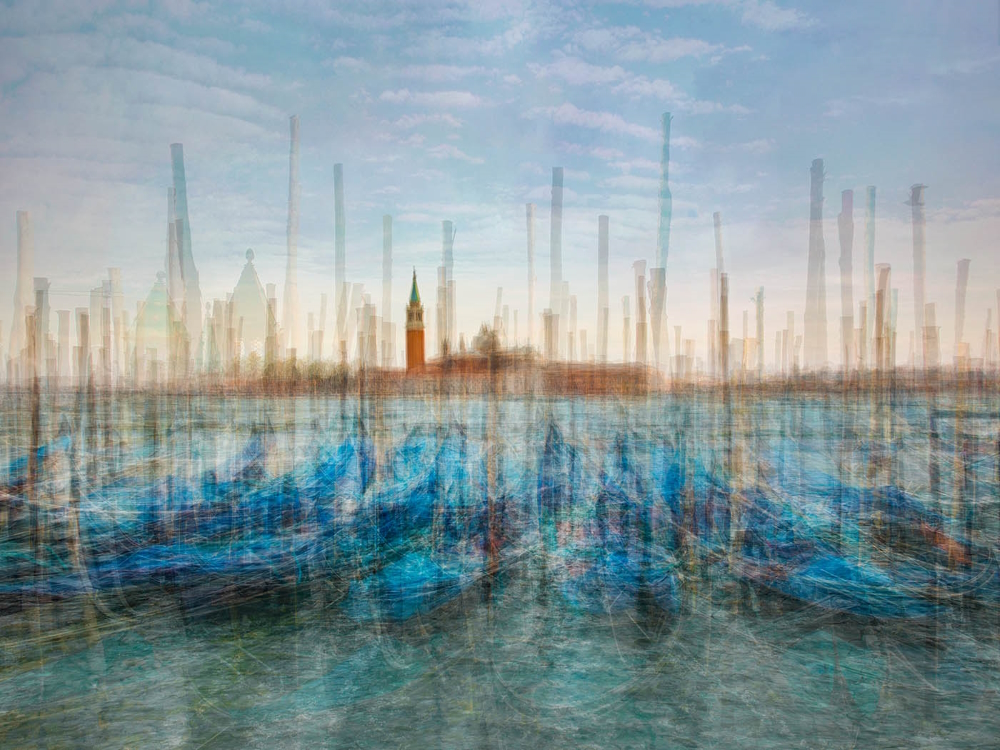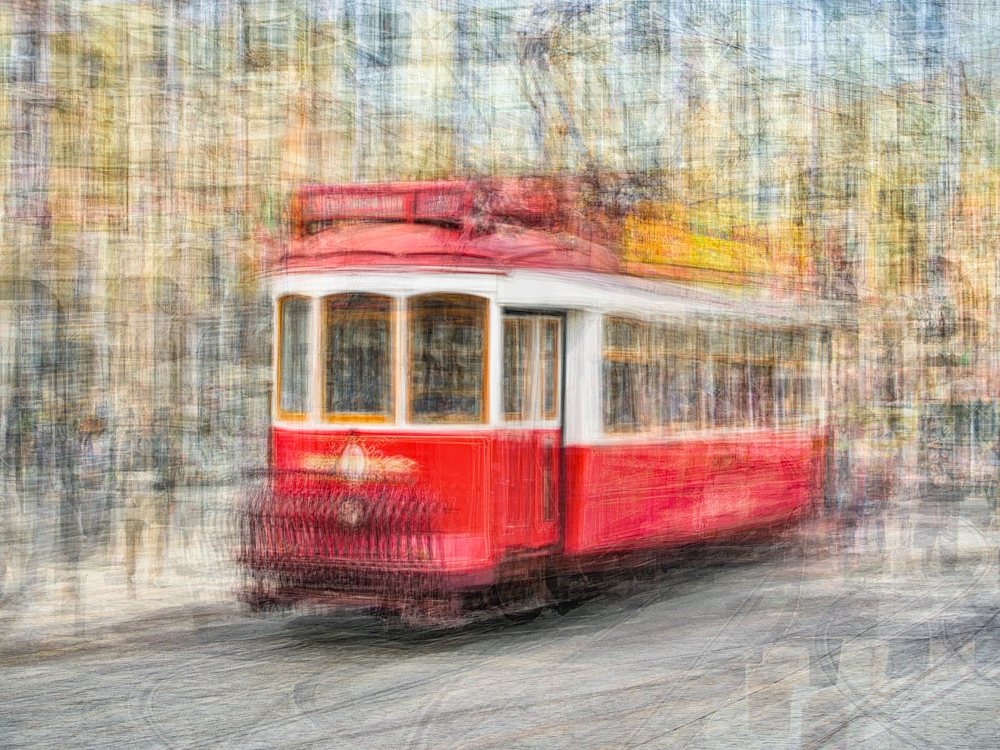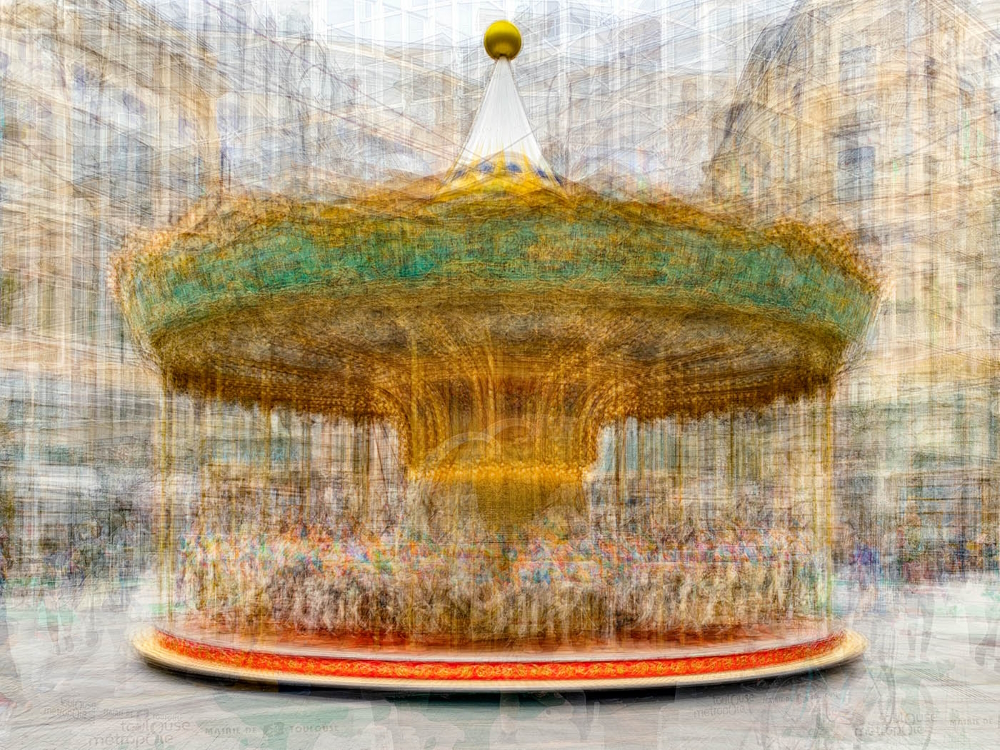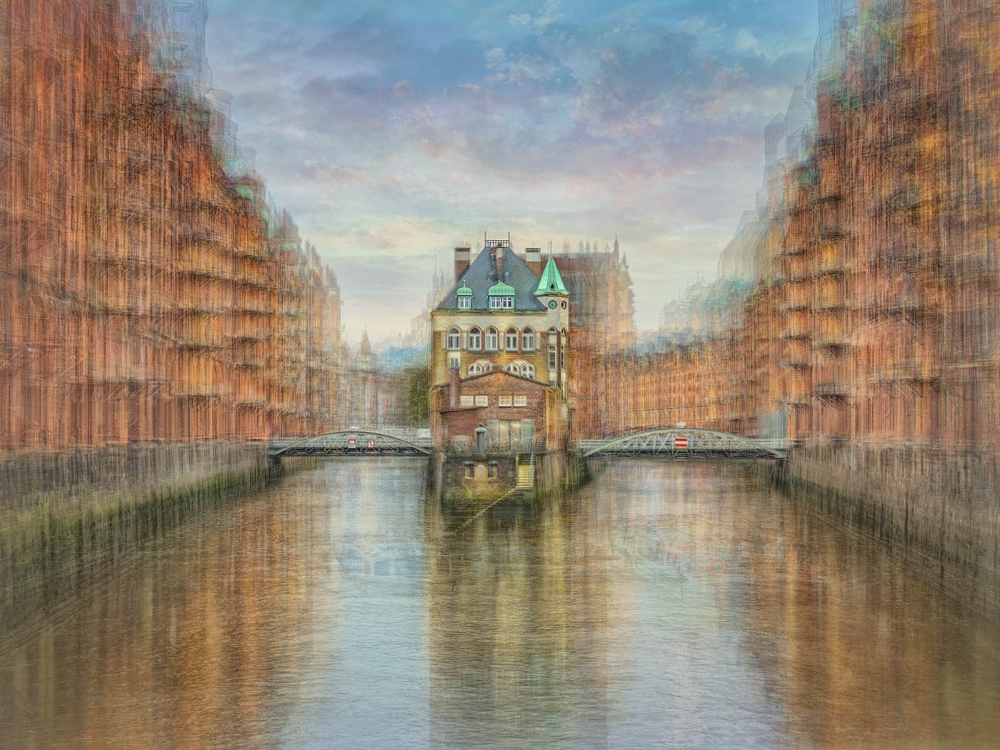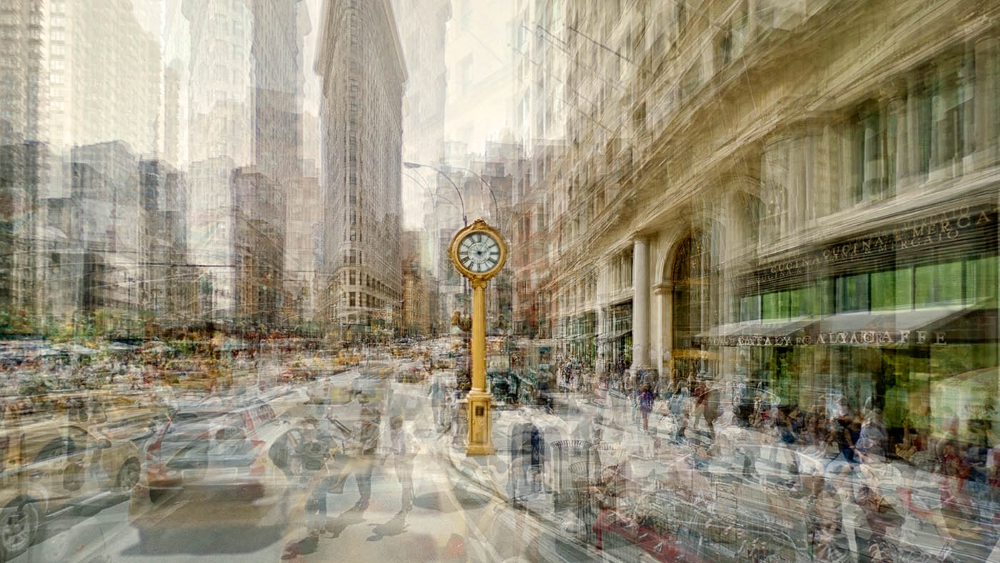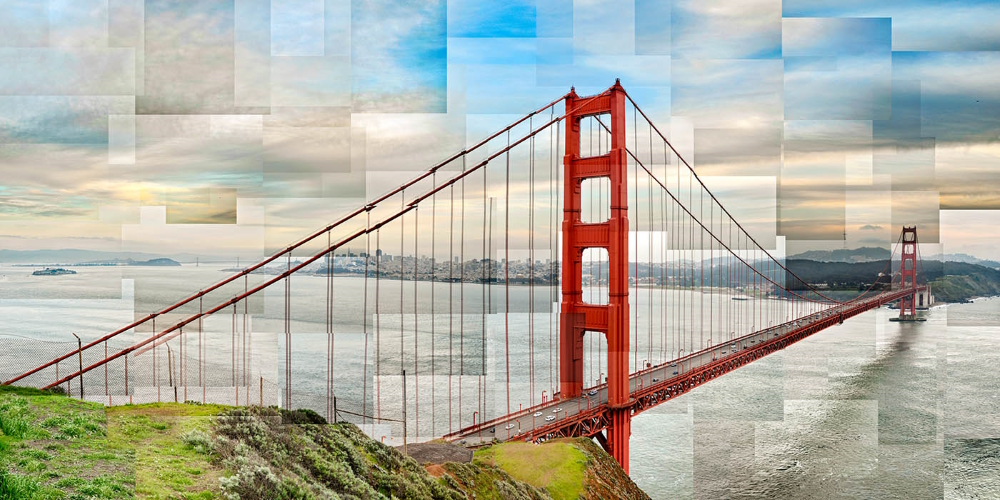Pep Ventosa
inventor of „in-the-round“-photography
Spain / US
„A multi-layered expansion of our viewing habits.“ Such a ground-breaking experience is offered by the extraordinary pictures of this Spanish photographer according to Lumas Art Editions. The man invented the unique „in-the-round“ (ITR) technique. For ITR he walks all around a subject and takes countless of photographs. Then all these shots are blended together to a multi-layered final image. The masterpieces combining optical depth and spectacular perspectives in a magnificent, very atmospheric way „depict our 3-dimensional world onto a 2-dimensional surface. It is a combination of Impressionism and Cubism in one.“ The admiration of fine art photographer/educator Sharon Tenenbaum for her colleague is in tune with the artist’s statement on his website: „I like exploring the space between photography and painting.“
Pep Ventosa
inventor of „in-the-round“-photography
Spain / US
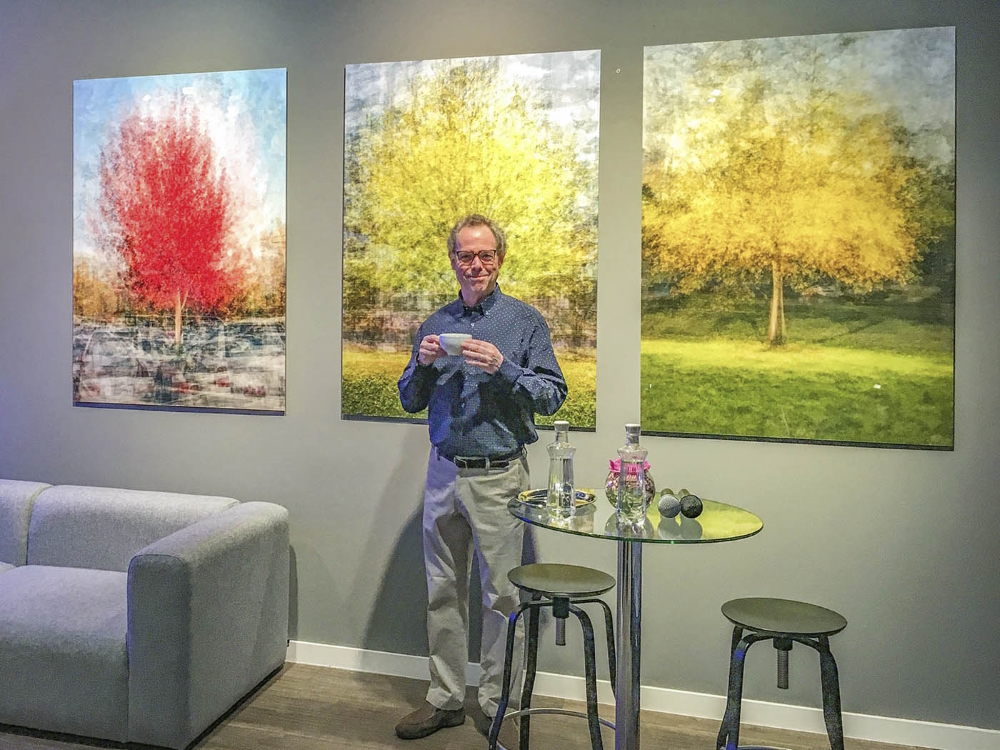
"We trust our senses and assume that what we see in a photograph is generally real”, Pep Ventosa told ZOOM Fine Art Photography Magazine, "so why not create something that doesn't exist to the naked eye?" Before he found his style in deconstructing and reconstructing the viewed world it was a long way to go for this creative.
Pep Ventosa was born 1957 in Vilafranca del Penedes, south of Barcelona. Growing up in a farmhouse he appreciated nature and the landscape of the wine countryside. In 1967 his family received a Olympus Pen camera as a present from friends and the ten year old boy started taking pictures. The fascination for photography was nurtured constantly by reading magazines like Life or National Geographic when playing drums became another serious hobby. After attending school in the capital of Catalonia studies of tourism followed. In his 20s Pep Ventosa bought his first single-lens reflex camera and went to Escola d’Arts i Oficis Artistics de l’Alt Penedes in his hometown to learn more about it while earning money as a professional drummer in various rockbands. 1999 saw him moving to San Francisco and finding the tools to achieving his photography vision: in the digital darkroom new approaches to represent his subjects were explored in self-instruction.
„I like the idea of taking familiar objects and finding ways to present them in a new light“, Pep Ventosa told onlandscape.co.uk. „I first capture something in smaller puzzle pieces - sometimes 20, sometimes 200 - and then rebuilt it in my digital darkroom. I don’t use stitching software; rather I do it by hand, or mouse if you will, positioning and processing every single piece at my will.“ How the shot will turn out as a printed image is a surprise up until the end, because „I don’t know how it will look until it’s done.“
So far the man who’s described as being a quiet and patient person has created various series: the famous „In the Round – Trees“, „The Collective Snapshot“, „Art’s Magnetic Field“, „Reconstruced Works“, „Street Rhythms“, „Carousels in the Round“ and „Urban Sculptures“. His output is exhibited in Asia, Australia, Canada, Europe and the US, part of numerous collections and not only appreciated by a curator of The Guggenheim Museum in New York. Esquire Magazine praised him too: „He adopts the creed of the photographer Hockney and his Picassian commitment to demonstrating that representational pictures (whether paintings or photographs) are as unrealistic and abstract as Guernica. PICASSO, HOCKNEY AND VENTOSA SHOW THEIR CARDS WHILE PERFORMING THEIR MAGIC TRICKS. They reveal in their own works the mechanisms of perspective and representation, corral the concept of the meta-narrative, of truth that gives a global meaning to the world, of a one-to-one panorama of what is real.“
The inventor of the „in-the-round“ technique received various honors like the Prix de la Photographie or the International Color Awards and is part of Photolucida's prestigious Critical Mass Top 50 (a jury of 200 museum curators, gallerists and other photography professionals selects the 50 best among thousands competitors). No wonder that his creative processes are on the curriculum for photography students these days.
Pep Ventosa, who usually works on several projects at once, lives near San Francisco, US.
Interview February 2023
Painting by blending photographs for a final image: new visual experiences
INTUITION/IMAGINATION
How does intuition present itself to you – in form of a suspicious impression, a spontaneous visualisation or whatever - maybe in dreams?
Intuition arises out of the blue. A gut feeling. A bit of magic. It likely florishes from years of experience, but the actual moment an idea sparks feels an unconscious happening. Imagination, on the other hand, at least for me, is more of a conscious and practiced effort.
Will any ideas be written down immediately and archived?
I’ve learned that if you don’t take notes you may lose a good idea or opportunity. I use both my phone and physical notebooks, writing thoughts and ideas with short descriptions.
?: How do you come up with good or extraordinary ideas?
My work is about finding new visual experiences in photography so I’m always looking through that conceptual lens, actively observing everything for ideas—pop culture, books, art, the news, films, conversations, walking safaris through cities and nature. I have an interest in representing familiar subjects in creative ways so I’m often looking for those connections. As an example, many years ago I was admiring a carousel in Paris, wondering how I might capture it in motion, in its environment. I began walking around it, eyeing it along my footpath and began shooting. Ultimately I combined those shots together back in the studio to present it “In The Round.” After that I quickly started applying the idea to trees and other subjects.
?: Do you feel that new creative ideas come as a whole or do you get like a little seed of inspiration that evolves into something else and has to be realized by endless trials and errors in form of constant developments up until the final result?
Trial and error, trial and error. Usually ideas serve as a reference or starting point. Since my work involves the combining of many shots together to arrive at a new place, I don’t really know how it will look until I begin layering and compositing. Much like the concept of the latent image in film photography: an image that exists floating in the film emulsion and can only be seen after it has been developed and exposed, staying in a mysterious latency during the time in between. I’m always looking for that surprise in my work, something I enjoy very much.
What if there is a deadline, but no intuition? Does the first fuel the latter maybe?
A deadline can alter my natural rhythm of creativity, but sometimes the pressure of a deadline, especially on commissioned work, can be a rewarding challenge that pushes your comfort zone in a positive way. Certainly it can fuel creativity.
INSPIRATION
What inspires you and how do you stimulate this special form of imaginativeness?
Being aware of what’s going on, not only in the art world, but in my general interests in life, stimulates my creativity. I regularly look around and ask myself “What if…?” and try to make connections. My deep fascination with the photographic medium and the unique role it plays in all our lives is at the root of some of my ideas. For instance, we’re all drawn to iconic places, which led to my “The Collective Snapshot” series. Imagine how many people are taking a vacation photo of the Venice gondolas at this very moment. Now imagine what it might look like if someone blended those shots together, one over the other over the other, until it arrived at a sort of collective memory.
?: How do you filter between ideas worthwhile pursuing and bad ones that you just let go of?
The way I work, ideas prove to be good or bad only after being at least sketched or tested several times. That’s my only filter to find out: experimentation. Sometimes it works, sometimes it doesn’t. Sometimes your intuition is right, sometimes it’s wrong, or it’s just not the right time to find its potential. An idea has to be exciting to get you going, but from the “latent image” in your brain to the final one, it may fall into the rejects folder.
Has it to appeal to you primarily or is its commercial potential an essential factor?
It has to appeal primarily to me, but I’m also interested in the viewer. I explore the aesthetics of the photograph and I see the reaction to my work as part of that exploration. That reaction can have a conceptual, a technical or a commercial component, depends on the receiver.
Do you revisit old ideas or check what colleagues/competitors are up to at times?
Old ideas are often revisited and brought into a new state due to more experience, updated knowledge or just a different perspective. An idea that didn’t work in a first attempt, can remain in its latency until an opportunity arises. As for checking fellow artists, I do it all the time, not from a competitive point but from a curiosity and love of the medium. It inspires me. It’s part of my quotidian observations.
CREATIVITY
Which time/place/environment suits your creative work process the best (tranquillity or pressure) and which path do you take from theory/idea to creation?
I like to work alone in my studio, in a small coastal town near San Francisco. It’s a lot of patient work in my digital darkroom. My workflow starts with an idea and research for appropriate imagery. Sometimes I shoot the source material and sometimes I search for existing shots. I’m a big fan of repurposing some of the billions of photographs taken every year, and spend a lot of time finding and archiving source shots I may use some day, shots that will ultimately disappear into a new image. Repetition is key in my work, as a concept and as a process. Blending shots of the same or like subjects, over and over and over, until something we haven’t yet seen emerges.
What is better in the realization process: speed and force creativity i.e. grasp the magic of the moment, or a slow, ripening process for implementation/elaboration?
As I like to work in the space between painting and photography, it’s a slow process of creation. Each work grows and takes shape over time, layer by layer, step by step. I am a patient person.
?: Do you have any specific strategies you use when you are feeling stuck creatively?
I move between open series I have. I consult my notes for direction. A walk in the forest can be helpful too. In the end, consistent working habits, even without satisfactory results, is the trick. As Picasso once said: inspiration must find you working.
How important are self-doubt and criticism (by others) during such a process i.e. is it better to be creative on your own, only trust your own instincts, or in a team?
Although I trust my instincts, I also know it’s sometimes not enough. I especially value working with my partner and wife, whose perspective on things I always trust. Once I’ve shared the work with a larger audience, I also value the opinions of others, to learn what people see when they look at the work. It enriches my own view, though it doesn’t fundamentally influence it.
Should a creative always remain true to him-/herself including taking risks & going against the flow or must one, for reasons of (commercial) survival, make concessions to the demands of the market, the wishes of clients and the audience’s expectations?
I don’t work only for me but also for the viewer. It’s a two-way connection through the artwork. That said, I want to stay true to my work because it’s my voice and what established me where I am. In the case of commissioned work, I want the viewer to be pleased, though the work still has to be something I feel proud of.
How is innovation still possible if one has established a distinctive style and, just in case, is it good to be ahead of one’s time even one hazards not being understood?
As long as we keep searching for ideas or the evolution of an idea, innovation is possible. Who’s to say what’s ahead of one’s time or what’s understood or not. As long as I’m feeling creative, I’m not worried.
When does the time come to end the creative process, to be content and set the final result free - or is it work-in-progress with an endless possibility of improvement?
The way I work, which tends to be closer to a painter in the rhythm and time employed in each work, I stop when I feel it’s time. How do I know? Who knows. When that next move feels too much, or the last is not enough. It’s a sense. There’s a lot of unfinished work I leave be until I have a better sense of that very question.
?: In case of failure or - worse - a creativity crisis how do you get out of such a hole?
It’s not fun to fall in the hole, but the reality is there's no success without failure. When things don’t work, when I feel dried out, I know that’s only momentarily. I just keep working, maybe on something different if I can, or I go for a nice walk. Things will get better.
SUCCESS
Should/can one resist the temptation to recycle a ‘formula’ one’s successful with?
When a formula succeeds, it empowers and energizes you. It’s a dynamic process so your formula can evolve or take a creative sharp turn. But a formula that starts to feel like a mediocre repetition exhausts itself.
Is it desirable to create the ultimate/timeless work, but doesn’t “top of the ladder” bring up the question of “what’s next?” i.e. isn’t such a personal peak “the end”?
My main desire, what keeps me going, is to find out what’s next. And whatever is, it will be. It’s never my intention to create the ultimate, timeless or the last work. Being an artist is the way of living that I’d choose and am very fortunate and grateful to enjoy.
MY FAVORITE WORK:
This piece remains a favorite. I was staying with friends in a beautiful spot in Ireland and shot it over a period of days, circling around and around it. When I later compositied them together back in my studio, it brought back fond memories and continues to bring a dreamy feeling to mind when I see it.

